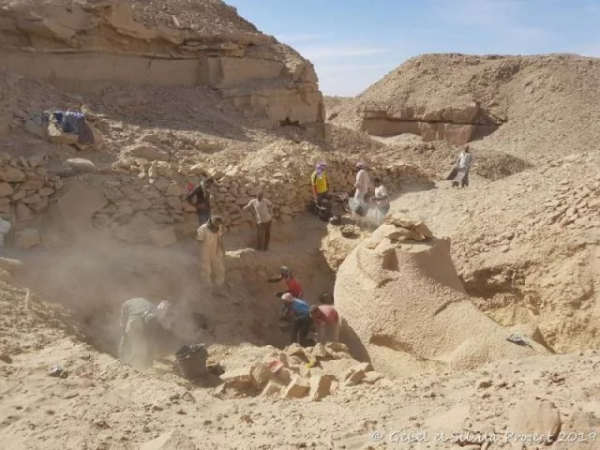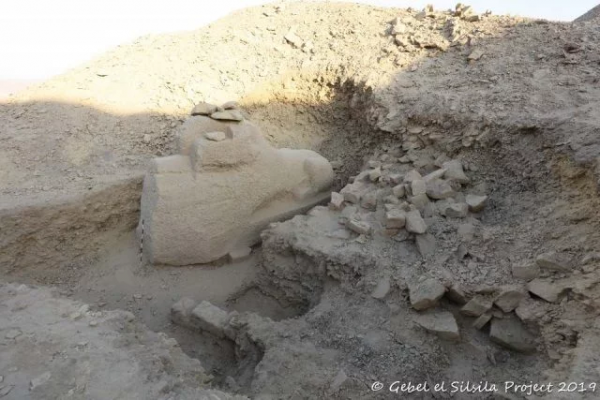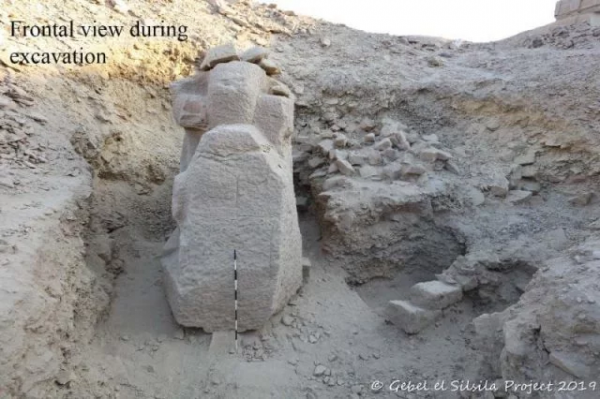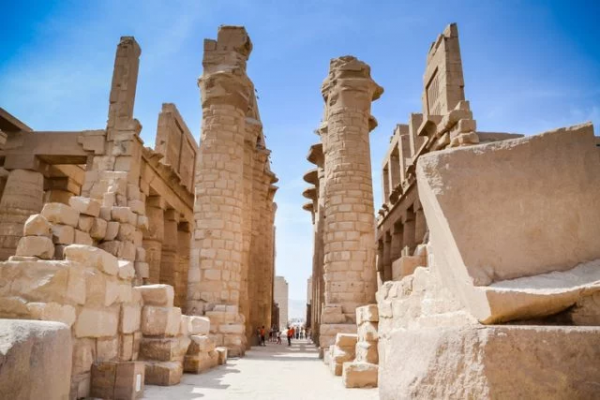 Egypt is the site of many ancient wonders, and it continues to dazzle and fascinate archaeologists, historians and tourists alike.
Egypt is the site of many ancient wonders, and it continues to dazzle and fascinate archaeologists, historians and tourists alike.
From the pyramids to the tombs of royal rulers from many centuries ago, Egypt’s ancient civilization draws millions every year to see its unique, complex and intricate symbols of times past.

Discoveries continue unabated at various digs in Egypt, as though there is seemingly no end to the artifacts and other treasures waiting to be found beneath the sand.
One such dig is ongoing at Gebel el-Silsila, where a massive, ram-headed sphinx was found in February, 2019.
An entire workshop has been uncovered, one archaeologists say likely dates back to the 18th Dynasty, and stood during the reign of Amenhotep III, who was King Tutankhamen’s grandfather.

The site is being excavated under the auspicious of a joint team, with archaeologists from Lund University in Sweden, and experts from Egypt’s Ministry of Antiquities.
In addition to the sphinx, the team has found a trove of other ancient objects, including red ochre quarry text hieroglyphics, written about 3,350 years ago, and fragments of a falcon sculpture. The large sculpture found — missing its head, unfortunately — measures five metres long and 3.5 metres tall.

In a statement released to the media at the time of the discoveries, the team said, “Both sculptures were preserved in rough-cut and prepared for transportation, but were likely abandoned at Gebel el-Silsila as the larger sculpture fractured.”
They’ve also uncovered hundreds of fragmented pieces of hieroglyphics, and a rudimentary statue of a coiled cobra, ready to strike.
It was these finds that led the team to surmise the workshop was that of a sculptor, who had, perhaps, an apprentice who practised by doing the rudimentary works.

But the cobra, experts say, was likely intended to sit atop the sphinx, creating a Criosphinx, which is the term for a statue like this. A more traditional sphinx has the head of a man atop it (King Tut’s is an example) and is called an Androsphinx.
Because the dig is deep in what was once a quarry, the team, led by archaeologists Maria Nilsson and John Ward, have a great deal of work ahead of them if they are to fully uncover all the remains and artifacts at Gebel el-Silsila.

Nilsson said last February that, in addition to the statue, they’ve uncovered a necropolis, a burial site for men, children and women.
But the massive statue is their focus, and how it wound up where it did. “One of the aspects that we are considering,” she explained in an interview, “is whether or not it was left behind because of the change in rulership.”
In other words, the 10-metric tonne statue was intended as tribute to Tutankhamen’s grandfather, but before it was completed he left the throne.
Hence, the statue was no longer appropriate. It’s just one theory, Nilsson said, that may explain why it was left at the site.
It’s hard to imagine the gargantuan piece of sandstone from which the statue was carved, which would have weighed more than 22,000 pounds, Ward said.
And of course the statue is only part of it; there are fragments of hieroglyphics by the hundreds, statues of wealthy officials buried in the necropolis, and many more artifacts.
As Ward described it, “We’ve got an immense task ahead of us to clean all of this tonnage of quarry spoil, to reveal all of this New Kingdom layer.”
Another Article From Us: Over 100 Mysterious ‘humanoid’ Figures Discovered in Peru
It will take years, no doubt, of slow, painstaking labour. But when they’re finished, the excavation at Gebel el-Silsila will no doubt join the ranks of other glorious, ancient sites in Egypt, and will – one hopes – become available for all to see


No comments:
Post a Comment